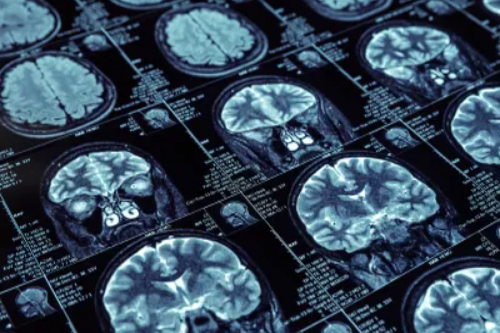
Neuroimaging
Neuroimaging has revolutionized the way we study and understand the human brain. From diagnosing neurological disorders to exploring cognitive functions, neuroimaging plays a crucial role in modern medicine and neuroscience. But what exactly is neuroimaging, and how does it work? In this comprehensive guide, we will explore the different types of neuroimaging techniques, their applications, benefits, and limitations.
Neuroimaging refers a set of techniques used to visualize the structure and function of brain. It provides non-invasive or minimally invasive methods to study the nervous system, offering valuable insights into brain activity, connectivity, and abnormalities.
Types of Neuroimaging Techniques
Structural Neuroimaging
Structural neuroimaging focuses on visualizing the brain’s anatomy, identifying abnormalities, and assisting in surgical planning.
1.Magnetic Resonance Imaging (MRI)
- Uses strong magnetic fields and radio waves to generate high-resolution images of brain structures.
- Commonly used for detecting tumors, strokes, and neurodegenerative diseases.
2.Computed Tomography (CT Scan)
- Uses X-rays to create detailed cross-sectional images of the brain.
- Effective in detecting hemorrhages, skull fractures, and severe brain injuries.
3.Diffusion Tensor Imaging (DTI)
- A specialized form of MRI that maps white matter pathways in the brain.
- Helps in diagnosing conditions like multiple sclerosis and traumatic brain injuries.
Functional Neuroimaging
1.Functional MRI (fMRI)
- Measures brain activity detecting changes in blood flow.
- Widely used in cognitive neuroscience and pre-surgical brain mapping.
2.Positron Emission Tomography (PET Scan)
- Uses radioactive tracers measure metabolic activity in the brain.
- Helps in diagnosing Alzheimer’s disease and other neurodegenerative disorders.
3.Electroencephalography (EEG)
- Records electrical activity in brain using electrodes placed on the scalp.
- Essential for diagnosing epilepsy, sleep disorders, and brain injuries.
4.Magnetoencephalography (MEG)
- Measures magnetic fields produced by neuronal activity in brain.
- Used for studying brain function in real-time.
4.Magnetoencephalography (MEG)
- Measures magnetic fields produced by neuronal activity in brain.
- Used for studying brain function in real-time.
Applications of Neuroimaging
1. Diagnosis of Neurological Disorders
Neuroimaging is vital for diagnosing conditions such as:
- Alzheimer’s disease and other dementias
- Parkinson’s disease
- Epilepsy
- Multiple sclerosis
- Brain tumors
- Stroke
- Traumatic brain injuries
2. Neurosurgery Planning
- Structural imaging techniques help neurosurgeons plan precise interventions.
- Functional imaging assists in avoiding critical brain areas during surgery.
3. Cognitive and Psychological Research
- Functional neuroimaging is widely used in understanding memory, learning, and emotional processing.
- Helps in studying psychiatric disorders such as schizophrenia and depression
4. Monitoring Treatment Effects
- Neuroimaging tracks disease progression and evaluates treatment efficacy.
- Used in monitoring recovery after brain injuries and strokes.
Recent Advancements in Neuroimaging
Artificial Intelligence in Neuroimaging
- AI-powered algorithms enhance image analysis, improving diagnostic accuracy and speed.
- Deep learning models assist in detecting early signs of neurological diseases
High-Resolution Imaging Techniques
- Ultra-high-field MRI (7 Tesla and above) provides clearer images of brain structures.
- Advanced PET tracers allow early detection of Alzheimer’s and Parkinson’s diseases.
Multi-Modal Imaging
- Combining MRI, PET, and EEG provides a more comprehensive understanding of brain function and pathology.
Portable and Wearable Neuroimaging Devices
- Advancements in EEG and near-infrared spectroscopy (NIRS) have led to the development of portable brain-monitoring devices.
- Useful for real-time brain activity monitoring in remote and clinical settings.
Challenges and Limitations of Neuroimaging
Despite its advancements, neuroimaging has some limitations:
- High Costs: MRI and PET scans are expensive and not always accessible.
- Radiation Exposure: CT scans and PET imaging involve radiation risks.
- Complex Data Interpretation: Advanced techniques require specialized expertise.
- Ethical Concerns: Issues related to brain privacy and incidental findings.
Future of Neuroimaging
- AI-Driven Diagnostics: Enhanced pattern recognition for early disease detection.
- Non-Invasive Brain Mapping: More precise, radiation-free imaging techniques.
- Brain-Computer Interfaces (BCI): Neuroimaging integrated with BCI for medical and assistive applications.Contact Us
Conclusion
Neuroimaging is a transformative tool in modern medicine, enhancing our understanding of the brain, improving diagnoses, and guiding treatments. With continued advancements in technology, artificial intelligence, and multi-modal imaging, the future of neuroimaging promises even greater breakthroughs in neuroscience and clinical care.Schedule your Consultation with Dr. Ritesh Nawkhare
